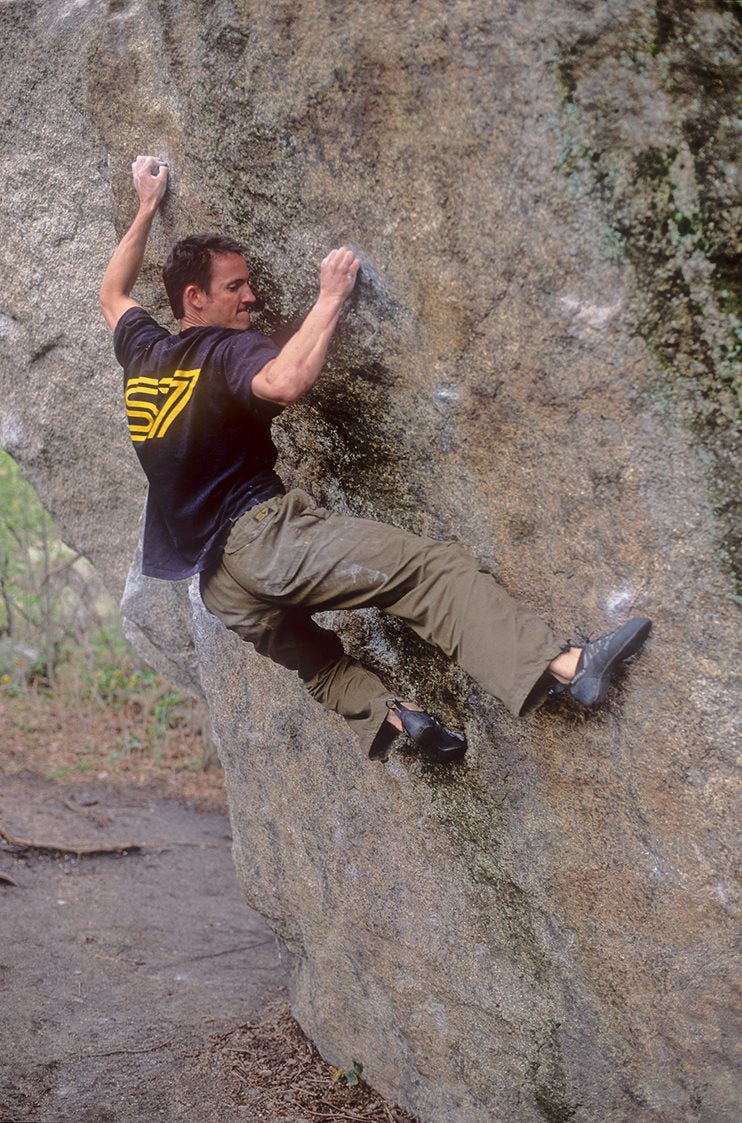The name Ben Moon is synonymous with the coming-of-age of sport climbing and hard bouldering in the UK. A driving force in the 1980s and 1990s climbing scene, Ben was among the first climbers to instigate modern redpoint tactics on climbs and helped revolutionise the sport. Throughout his climbing career, spanning more than four decades, he has climbed 9a, bouldered up to V14 and run a successful climbing company. He established new benchmarks for the hardest climbs in the world and is best known for the first ascent of Hubble at Raven Tor, which upon its establishment was the first 8c+. With a font 8B boulder crux, the eight-metre, rarely repeated route is now regarded to be 9a.
In recent years Ben has shown agin and again that age is no limit to hard climbing with a slew of hard ascents, including establishing an 8B+ boulder aged 40 and sport climbing 9a just shy of his 49th birthday.
Ben grew up in the south of England and first went climbing when he was seven years old while on a walking holiday in the Lake District. At 16 he left school, moved to Sheffield and signed on the dole in order to pursue climbing full time. In the following decade he helped change the face of British climbing.
Initially, Ben was part of the blossoming UK trad climbing scene and climbed up to E7. However, a trip to France—the place to be for hard sport climbing at the time—with climbing partner Jerry Moffat in the early 1980s prompted the duo to adopt French climbing tactics on UK crags, slowly pushing the grades by repeatedly attempting routes in a yo-yo style until success was achieved. These tactics progressed to full redpoint strategies by the mid- to late-1980s, which resulted in a rocketing standard of sport climbing in the country.
After several seasons Ben had repeated many of the hardest climbs in Buoux—and the world—including Antoine Le Menestrel’s La Rage de Vivre and Marc Le Menestrel’s Le Minimum, both 8b+. He then turned his attention to establishing his own routes.
In 1984, as a wiry 18 year-old with shoulder-length dreadlocks, Ben made his name in the climbing scene by establishing the UK’s benchmark 8a test piece Statement of Youth at Lower Pen Trwyn in North Wales. This was one of the first fully bolted sport climbs in the country—in an era of stout trad climbing and ethics—and only the second 8a.
Ben went on to establish other cutting-edge routes, including Agincourt (8c) at Buoux, France in 1989, which was potentially the hardest route in the world at the time, Hubble in 1990 and Sea of Tranquility (8c+) at Lower Pen Trwyn in 1993.





